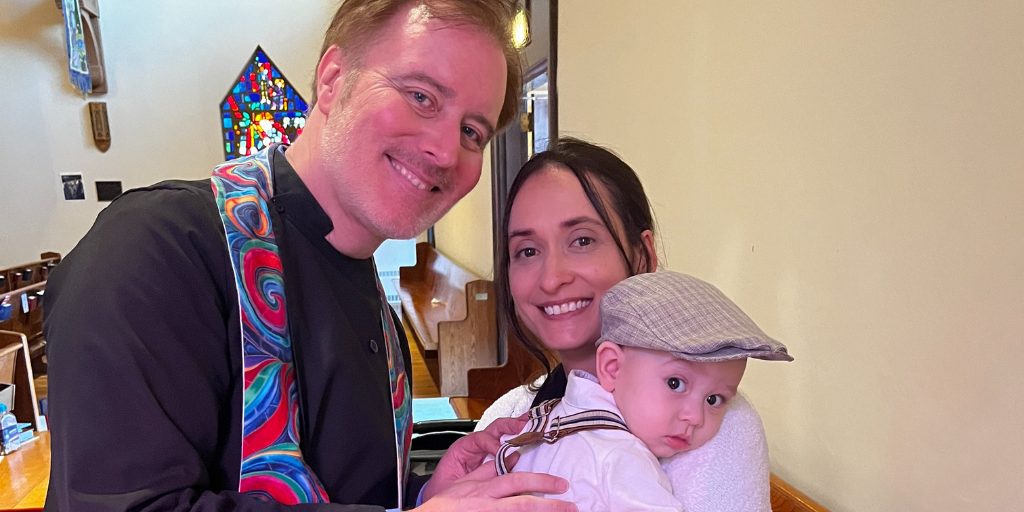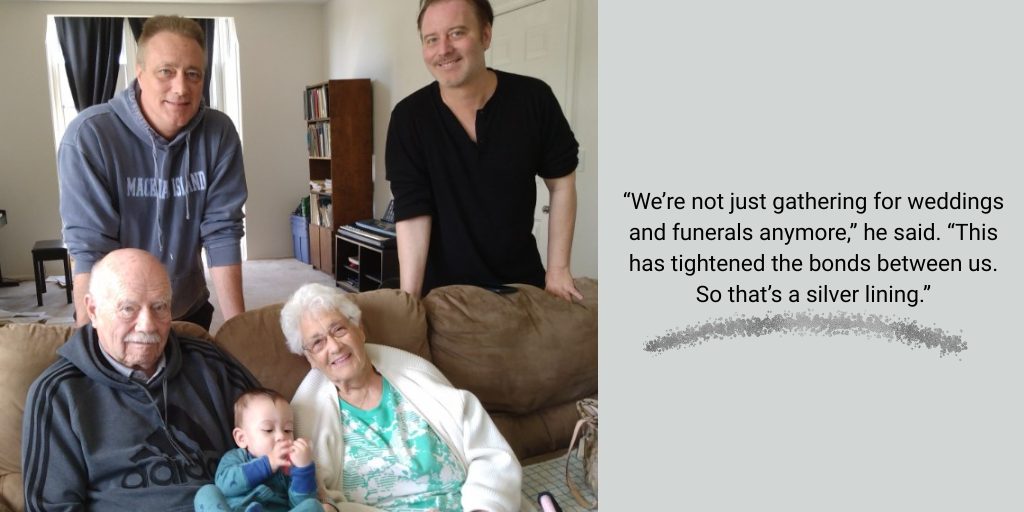Featured Survivor Story:
Living Through TIL Therapy: A Personal Story

By Mara Klecker
A Hidden Threat
Michael Moran initially assumed the rough patch on his left heel was simply a stubborn callus. But the various remedies he tried — ointments, callus removers, salicylic acid — didn’t work. When he consulted with his doctor, he was referred to a dermatologist. Biopsies proved why the spot hadn’t faded with creams: Michael had skin cancer, specifically acral melanoma.
Acral melanoma is a type of melanoma that appears on the palms of the hands, the soles of the feet, or under the nails. These melanomas are often discovered later than other types of melanomas because of the misconception that skin cancer only appears on sun-exposed areas.
Michael had that assumption himself. He’d been a lifeguard in the late ‘80s and figured if he were to get skin cancer, it’d show up on his nose or another spot on his body that had baked in the sun.
“I was probably the least concerned person,” he said. “This just seemed like a one-off and I figured ‘I’m not going to get taken by skin cancer.’”
The last several years, however, has proven how concerning that spot really was. About six months after surgery to remove the cancer from his heel, Michael noticed a lump near his hip on the same leg. The cancer had spread.
What followed were months of immunotherapy, targeted medications, and constant scans. “We were on Plan J at that point,” he said.
Last year, when standard treatments stopped working, his doctors at Kaiser Permanente brought up something new – tumor-infiltrating lymphocyte therapy, or TILs for short.
“I was kind of out of options at that point and was gently guided by my amazing team to try it,” Michael said.
Facing Advanced Treatment
TIL therapy is a process in which the cancer-fighting immune cells are removed from the patient’s body, grown and multiplied in a lab, and then reintroduced back into the body. In addition to the immune cell infusion process, TIL therapy includes the administration of two other drug regimens over the course of weeks.
Preparing for the treatment involved weeks of tests that Michael had never heard of, all to ensure he could endure the difficult treatment.
For Michael, becoming one of the first patients to receive TIL therapy meant traveling from Oakland to Stanford University, one of the hospitals certified to deliver the then newly FDA-approved treatment.
Surgeons removed Michael’s T-cells and shipped them across the country to a specialized lab in Pennsylvania. There, his immune cells were isolated, expanded, frozen, and sent back to Stanford. Meanwhile, he prepared his body through chemotherapy to wipe out his existing immune system — essentially clearing the way for the re-introduction of the multiplied tumor-specific immune cells.
The TIL therapy and its intensive lead-up caused a litany of side effects. The week of “old-school chemo,” as he described it, caused hair loss — something he’d braced for — and, unexpectedly, the TIL therapy turned all his hair, including his eyebrows and eyelashes, stark white.
The extreme immune suppression kept him hospitalized for more than two weeks and required that his mother, who traveled from Florida to stay with him, monitor him around the clock after discharge.
The weeks that followed were defined by profound exhaustion and relentless gastrointestinal distress. Michael spent most of his early recovery either in bed or in the bathroom, and the overwhelming fatigue that made it difficult to think clearly or follow even simple TV episodes. The cognitive fog and physical depletion left him unable to engage in any of the restorative activities he had imagined during his three months away from work. He described the entire period as feeling like he’d had “a flu for a long time,” one that left him physically weakened and mentally drained well after leaving the hospital.
He spent 17 days in the hospital and several more weeks in a nearby hotel while recovering. His mother flew from Florida to care for him.
The hardest part, though, was being away from his then 1-year-old son. “When I was in the hospital, no one under 12 could visit,” he said. “I only got to see him twice. It was like being sent away to the military.”

Michael turned 50 in the hospital, on what he called “the worst day of the treatment.” He joked that he’d like to just skip the birthday, but the nurses brought him a small cake. Even without the circumstances, a milestone birthday often causes reflection, Michael said.
“I was just thinking about not wasting time on nonsense,” he said. “I wasn’t out of the woods yet, so it was about ‘What’s really important in my life?’ And in looking ahead, if I won’t be around for a long time, I was thinking ‘How do I set up best for my son?’”
Reflections and Resilience
Now 51, Michael is back home and still reflecting. Despite very successful immediate results from the TIL therapy, recent PET scans show that the cancer is back and spreading. Michael and his team are determining next steps and new treatment options.

For others facing TIL therapy, Michael’s advice is simple: “Be patient with the process. It’s long and hard, but not impossible. Give yourself time to heal.” He also credited his medical team and his strong family support for helping him through the process.
Though the last several years have been what Michael describes as a chaotic blur of treatments, he said the experience overall has sharpened his focus and brought his family closer together. Spending time together is a heightened priority with a Stage IV cancer diagnosis.
“We’re not just gathering for weddings and funerals anymore,” he said. “This has tightened the bonds between us. So that’s a silver lining.”
Despite the difficulty of the TIL therapy and the recovery afterward, Michael said he feels “oddly lucky” to have received it. “It wasn’t easy by any means but I’m grateful for it. I was in the right place at the right time.”
Recent Posts

One Day at a Time: Caregiving Through Ocular Melanoma

A Life Rewritten: Finding Strength in the Face of Melanoma

Living Through TIL Therapy: A Personal Story

You’re Not Out of Options: What to Do When First-Line Melanoma Treatment Fails


